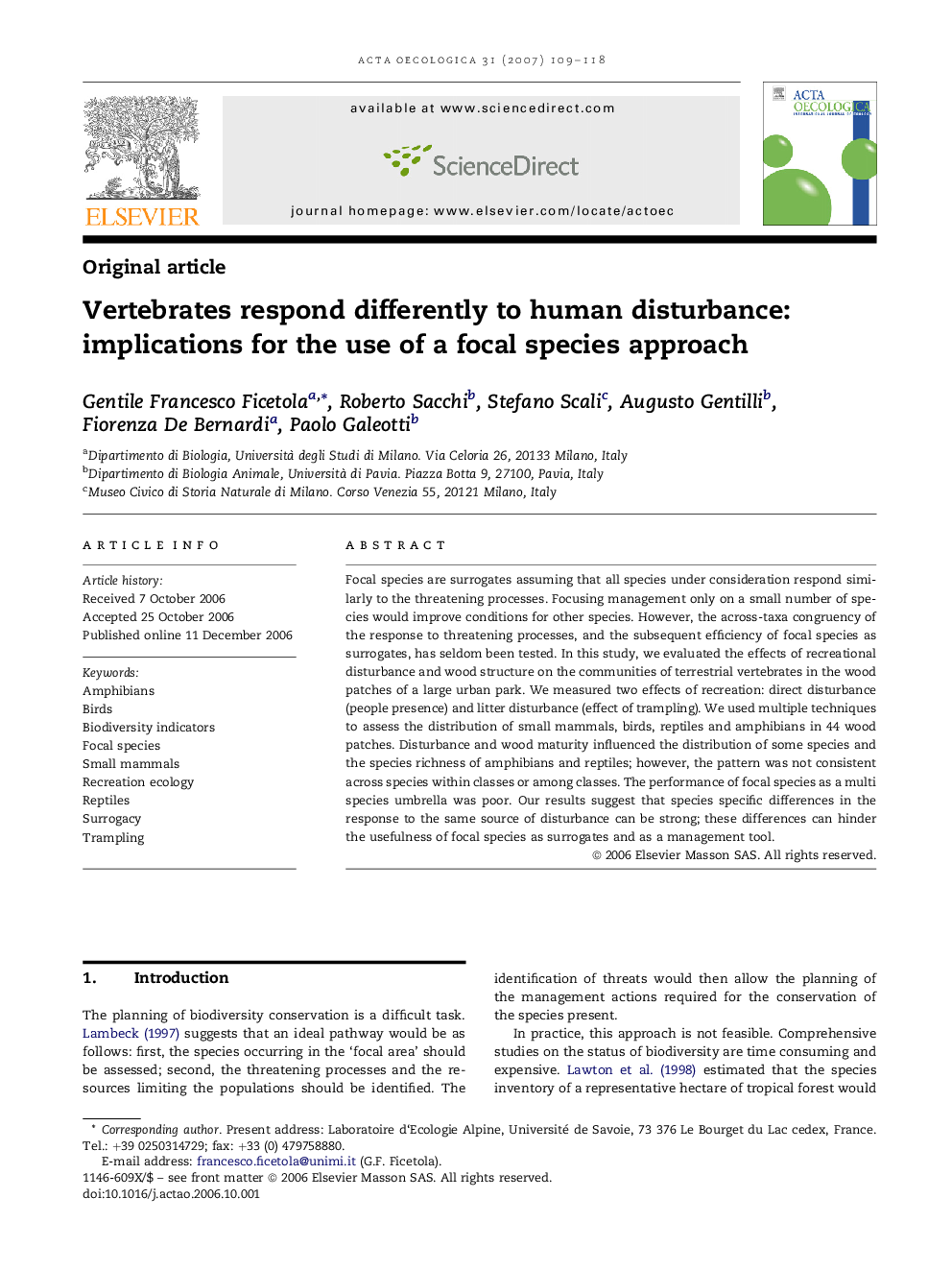| Article ID | Journal | Published Year | Pages | File Type |
|---|---|---|---|---|
| 4381740 | Acta Oecologica | 2007 | 10 Pages |
Focal species are surrogates assuming that all species under consideration respond similarly to the threatening processes. Focusing management only on a small number of species would improve conditions for other species. However, the across-taxa congruency of the response to threatening processes, and the subsequent efficiency of focal species as surrogates, has seldom been tested. In this study, we evaluated the effects of recreational disturbance and wood structure on the communities of terrestrial vertebrates in the wood patches of a large urban park. We measured two effects of recreation: direct disturbance (people presence) and litter disturbance (effect of trampling). We used multiple techniques to assess the distribution of small mammals, birds, reptiles and amphibians in 44 wood patches. Disturbance and wood maturity influenced the distribution of some species and the species richness of amphibians and reptiles; however, the pattern was not consistent across species within classes or among classes. The performance of focal species as a multi species umbrella was poor. Our results suggest that species specific differences in the response to the same source of disturbance can be strong; these differences can hinder the usefulness of focal species as surrogates and as a management tool.
